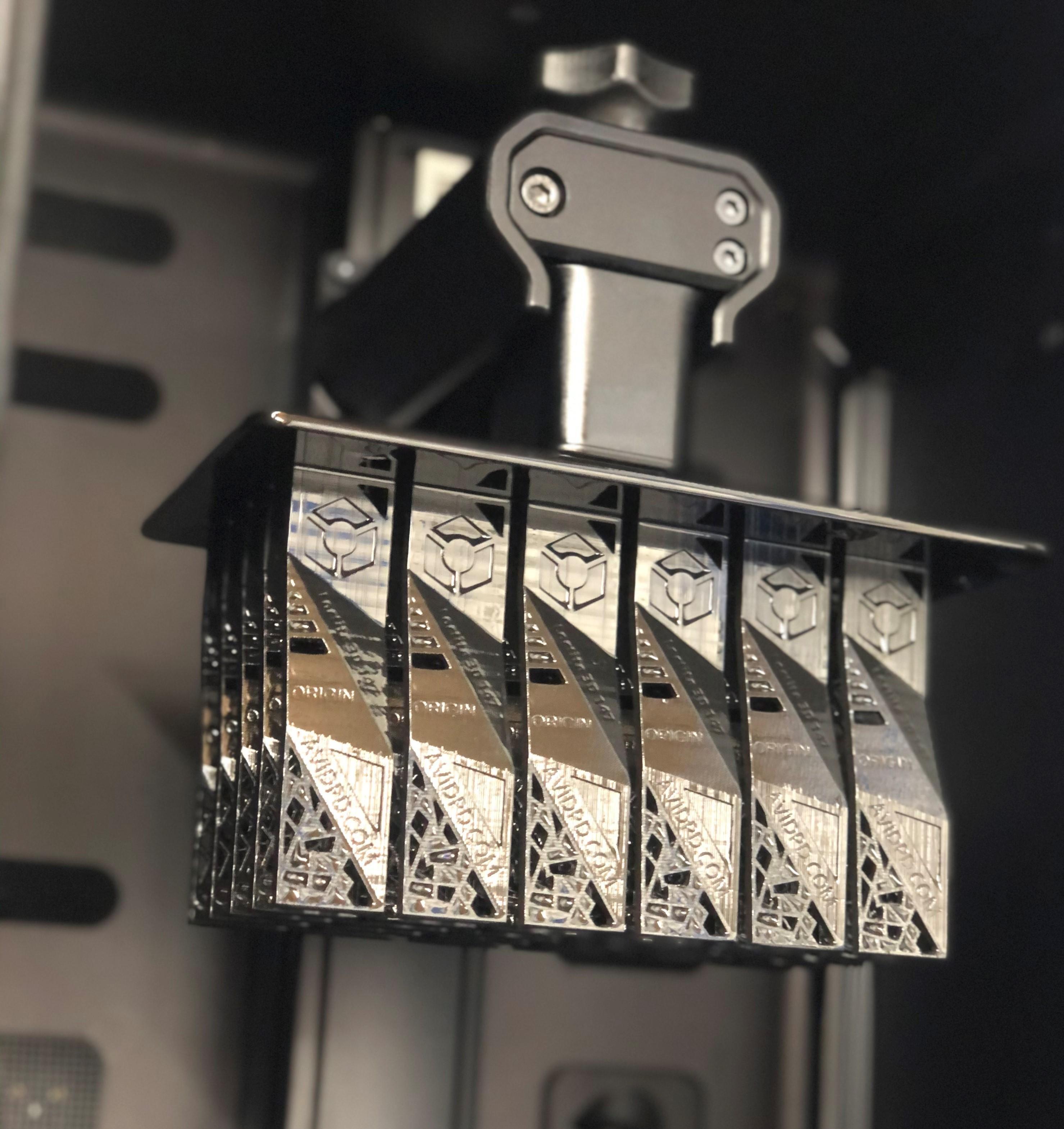In the ever-evolving world of 3D printing, innovation knows no bounds. One of the latest breakthroughs in this field is Programmable Photopolymerization (P3), a cutting-edge technology that is revolutionizing the way we create highly accurate and detailed 3D-printed parts and prototypes. Origin Programmable Photopolymerization, often referred to as Origin P3, stands at the forefront of this revolution.
Origin P3 employs a unique approach by utilizing light to selectively cure liquid resin, layer by layer, to create intricate and precise 3D objects. This technique offers unparalleled precision and detail, making it a game-changer in industries such as aerospace, healthcare, automotive, and consumer goods. P3 technology’s ability to produce complex geometries with exceptional accuracy has opened up new possibilities in design, engineering, and manufacturing.
The Essence of Origin Programmable Photopolymerization (P3)
Origin Programmable Photopolymerization (P3) is synonymous with precision and consistency in the realm of 3D printing. It is an advanced additive manufacturing technique designed for end-use manufacturing, offering remarkable accuracy and repeatability. Here are some key points to consider about Origin P3:
Highly Accurate and Repeatable Results:
Origin P3 is engineered to provide exceptionally precise and consistent 3D printing outcomes. This technology harnesses the power of photopolymerization, a process that converts liquid polymer resin into hardened plastic parts with meticulous accuracy. The result? Highly accurate and repeatable 3D-printed objects that meet the most demanding specifications and tolerances.
Ultra-Fine Layers for Unparalleled Quality:
One of the standout features of Origin P3 is its ability to create ultra-fine layers during the printing process. These thin layers contribute to the production of clean, smooth, and incredibly detailed parts and prototypes. The fine layering ensures that the final product boasts exceptional surface finish and intricate detailing.
Diverse Range of High-Performance Materials:
In addition to its precision and fine layering capabilities, Origin P3 offers a diverse range of high-performance photopolymer materials. This versatility enables the production of parts with varying properties and characteristics, making it an ideal choice for a wide array of applications.
Applications of Origin Programmable Photopolymerization (P3)
The versatility and precision of Origin P3 technology open up a world of possibilities for various industries. Let’s explore some of the exciting applications that benefit from this innovative 3D printing technique:
Realistic Prototypes:
When it comes to product development and prototyping, realism is key. Origin P3 allows for the creation of highly detailed and accurate prototypes that closely mimic the final product. This realism is invaluable for design validation and market testing.
On-Demand Part Production:
In industries where on-demand manufacturing is critical, Origin P3 shines. Whether it’s creating spare parts for machinery or producing custom components, this technology offers a swift and cost-effective solution for manufacturing parts as needed.
Custom Light Pipes and Transparent Covers:
The demand for custom-designed light pipes and transparent covers is on the rise in industries like electronics and automotive. Origin P3 can produce these components with exceptional precision, meeting stringent optical requirements.
Production Tooling:
The manufacturing world relies heavily on production tooling. Origin P3 enables the rapid and precise fabrication of molds and tooling, reducing lead times and production costs.
Orthotic Insoles:
In the realm of healthcare and orthopedics, customized orthotic insoles are a game-changer. Origin P3 technology allows for the production of tailored insoles that provide optimal comfort and support to individuals.
Gaskets and Other Elastomeric Components:
Industries requiring elastomeric components, such as automotive and aerospace, can benefit from the versatility of Origin P3. It can produce gaskets and seals with varying durometers to meet specific requirements.
Robotic End of Arm Tooling (EAOT):
Robotic systems are becoming increasingly integral to various industries. Origin P3 can be employed to create lightweight yet robust end-of-arm tooling for robots, enhancing their functionality and adaptability.
How Origin Programmable Photopolymerization (P3) Works
Now that we have explored the remarkable applications of Origin P3, let’s take a closer look at how this cutting-edge technology operates:
Origin P3 3D printing utilizes photopolymerization technology, which involves carefully controlling light, temperature, and other conditions to produce detailed and isotropic end-use parts and prototypes. The core principle of P3 is similar to digital light processing (DLP) and stereolithography (SLA), both of which rely on photoreactive chemistry to cure liquid polymer resin into hardened plastic parts.
In the case of Origin P3, a digital light projector is used to cure the resin. Unlike SLA, which employs a laser to focus on single points, P3 technology boasts a significant advantage: it cures entire layers with a single flash of the light projector. This efficiency translates to faster print times and improved productivity.
One crucial distinction between Origin P3 and other 3D printing technologies like DLP and SLA is how it deals with oxygen during the printing process. While both DLP and SLA may actively or passively manipulate oxygen, P3 technology does not, which widens the scope for using various materials with varying chemistries. This flexibility is a significant asset when it comes to material selection for specific applications.
Harnessing the Future of 3D Printing with Origin P3
Origin Programmable Photopolymerization (P3) has emerged as a game-changing technology in the world of 3D printing. Its precision, repeatability, fine layering capabilities, and compatibility with diverse materials make it a powerhouse in the additive manufacturing industry. The wide range of applications, from realistic prototypes to robotic end-of-arm tooling, showcases the versatility and potential of this innovative technology.
As industries continue to evolve and demand ever more advanced manufacturing solutions, Origin P3 stands ready to meet those challenges head-on. With its commitment to excellence and cutting-edge technology, Origin P3 is at the forefront of additive manufacturing, poised to play a pivotal role in shaping the future of 3D printing. If you’re embarking on a project that requires the expertise of additive manufacturing, look no further than Origin P3 to unlock precision, consistency, and endless possibilities in the world of 3D printing. Contact Avid Product and Development today to explore the boundless opportunities that Origin P3 technology offers and elevate your innovations to new heights.

